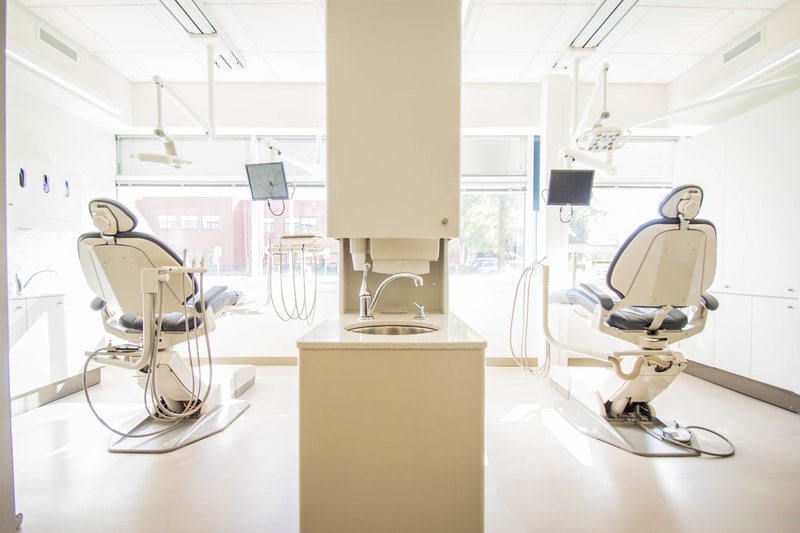The United States spends almost twice as much per capita on healthcare than other developed nations, and the reason isn’t due to too many doctor’s visits. Instead, it’s because our healthcare prices are astronomical. Costs are only expected to rise, with projected increase rates of 5.5 percent per year for the next decade. It’s no wonder seniors struggle to pay healthcare premiums, deductibles, and coinsurance charges on their limited retirement income.
While cheaper insurance through Medicare is usually available at 65 for most seniors, many are blindsided by common, yet costly, services that aren’t covered. What are these hidden healthcare expenses, and what can you do to save on them? Find the answers below.

5 Hidden Healthcare Expenses Senior Face
1. Long-term Care
According to the U.S. Health and Human Services Department, there’s a 70 percent chance that an adult who turns 65 today will need long-term healthcare services at some point during their remaining years. On average, women and men will need 3.7 and 2.2 years of care, respectively.
Unfortunately, long-term care is one of the least discussed, yet most costly expenses seniors may face in their lifetime. Costs rival that of a well-paid employee’s salary. The median price for care at an assisted living facility is $48,000 per year, while semi-private rooms at a nursing home cost an eye-watering $89,000 annually. If you plan on staying home instead, home health aides or homemaker services are around $50,000 yearly.
Medicare doesn’t cover any of these expenses. There’s only limited coverage for skilled nursing care and rehabilitative care under specific conditions, such as recovering from a medical procedure.
2. Supplemental Medicare Policies
Due to limited Medicare coverage for many common ailments affecting seniors, some older adults add a supplemental Medicare policy for greater peace of mind and financial security. Options include Medigap and Medicare Advantage, also known as Medicare Part C. Medigap charges an extra premium on top of Medicare Parts A, B, and D, and Medicare Advantage is provided through private insurance companies.
Supplemental insurance can be incredibly helpful in picking up out-of-pocket costs, like coinsurance and deductibles, so that a medical emergency doesn’t bankrupt you. Individuals pay anywhere between $67 to $421 per month in premiums for Medigap, depending on their plan. For Medicare Advantage, the premiums range from $0 to high $300s, though the average Medicare Part C premium in 2020 is $23.
3. Dental Care
While everyone hopes they’ll only need routine dental care in their old age, that’s not always the case. Because Medicare doesn’t cover dental services, many seniors avoid the dentist.
However, healthy teeth and gums are crucial to their well-being. Multiple studies link poor dental care with dementia and diseases that can kill you. Bacteria from infected gums may travel through the bloodstream and lodge itself onto an organ. If it lands on your heart or heart valves, the serious condition is called bacterial endocarditis. It can be fatal if left untreated. Studies also link gum disease to diabetes and chronic lung disease.
If routine dental care is expensive, then complex procedures, like dental implants and bridges, are highway robbery. A single dental implant costs around $4,800, and dental bridges clock in at $500 to $1,200. Extracting all your teeth and getting dentures sets you back a staggering $8,200 for procedures with no complications.
4. Vision Care
Medicare won’t pay for routine eye services like annual exams or eyeglasses, so you can expect to pay the costs out-of-pocket. Glasses can run hundreds of dollars, and if your spouse needs them too, both of you can easily spend a grand in a visit.
What you can count on Medicare covering is diagnostic and treatment costs for eye diseases, injury, and trauma. Examples include glaucoma, cataracts, and any corrective lenses you need after surgery. Medicare will also pay for preventative screenings of eye diseases you’re at high risk for. But keep in mind, you still have to pay your deductible and coinsurance percentage.
5. Hearing Devices
The National Institute on Deafness and Other Communication Disorders reports that “approximately one in three people in the United States between the ages of 65 and 74 has hearing loss, and nearly half of those older than 75 have difficulty hearing.” But only 30 percent of those 70 and older who could benefit from hearing aids wear them.
While part of the 70 percent who don’t invest in hearing aids may not realize they need them, a vast majority probably find them cost-prohibitive on a retirement budget. Medicare doesn’t cover the cost at all, and even the simplest of hearing aids is at least $1,000, with prices going to $4,000 or more for models with more features.

How to Save Money on Medical Expenses as a Senior
A little bit of planning ahead of time or knowing where to go when you need health services can save you a significant amount of money. Here are eight ways you can save on your health bills.
1. Find Long-Term Care Insurance Early
To offset the eye-popping costs associated with long-term care, try to find long-term care insurance early. You might not need it until your 70s or 80s, but the American Association for Long-Term Care Insurance (AALTCI) recommends you create a policy in your mid-50’s. The earlier you sign up, the better your rates. And if you wait until it’s necessary, you might find you don’t qualify.
The AALTCI reports around 23 percent of people in their 60s are denied coverage, while only 14 percent of those in their 50s are turned away. The Affordable Care Act protects you from being denied health insurance because of pre-existing health conditions, but long-term care policies aren’t included in the bill. People with difficulty performing routine tasks or with dementia could pay higher premiums or have their application rejected altogether.
2. Take Advantage of Your Deductible Threshold
Whatever health insurance or combination of health insurance you have, there’s likely a deductible to pay before the insurance company covers your medical costs.
If you’ve met that deductible for the year, it might be a good time to schedule medical examinations and procedures. You’ll save yourself from out-of-pocket expenses because you’ve already paid the maximum required. If you wait until next year, you could end up paying more for your procedure because you’ll have to meet your deductible levels again.
3. Buy Supplemental Insurance
If you familiarize yourself with supplemental insurance, you can make an informed decision about whether to save for it when younger or have it at all when older if you’re in good health. For high-risk seniors—those who smoke, frequently visit the doctor, or have two or more chronic health conditions—supplemental insurance can save big money.
Eighty percent of high-risk seniors without supplemental insurance can expect to pay as much as $21,800 in their first year of retirement. With a Medicare Advantage plan, the maximum you’d pay out-of-pocket would be $6,700 for in-network providers.
It’s important to note that while Medicare Supplement Plans C and F were popular options, the rules changed starting January 1, 2020. Medigap plans no longer cover the Medicare Part B deductible, so Plans C and F aren’t sold any longer to people who become eligible for Medicare after that date. If you already have one of these two plans, you’re allowed to keep it.

4. Save on Dental Care
As previously discussed, Medicare doesn’t cover dental services, even though the bill can be massive. But you can keep significantly more money in the bank if you know where to go. For example, you can avail yourself to your local or state health department or United Way chapter for help in finding reduced-cost dental services near you.
You can also participate in clinical trials or make an appointment with a local dental or dental-hygiene school if desired. The National Institute of Dental and Craniofacial Research suggests this as a way to get free or low-cost treatment for your dental needs.
While dental insurance may seem like an obvious choice to help pay for dental procedures, the math shows that for many seniors, it’s not a good value. “When you add up the premiums and copays, for the vast majority of adults, it’s not worthwhile to have dental insurance,” says Marko Vujicic, vice president of the American Dental Association’s Health Policy Institute.
And unless you have a stellar dental insurance plan, you’ll most likely end up paying for most, if not all, of the dental procedure yourself. There are deductibles to meet, and the maximum annual benefit or coverage limits are often between $1,000 and $2,000. That’s not enough to cover even a single dental implant.
5. Get Free Vision Care
Qualifying seniors can get a free eye exam and up to one year of complimentary eye-care services with EyeCare America. It’s a program of the Foundation of the American of Ophthalmology that uses volunteer ophthalmologists to provide services. To be eligible, you must:
- Be 65 or older
- Be a U.S. citizen or legal resident
- Not have had an eye exam in three or more years
If you’re at high risk for glaucoma but don’t have insurance, you may also be eligible for a free glaucoma exam.
Also, keep in mind that Medicare does cover some eye exams and treatments for members with a high-risk of eye disease—they just have to pay the deductible and coinsurance. Check with your insurance to see what you’re entitled to.
6. Stay In-Network
Choosing doctors within your health plan’s network of providers can save you hundreds, if not thousands of dollars. That’s because your doctor negotiated a contracted rate with the health insurance company. This rate is less than what the insurance company pays at with out-of-network providers. Insurance carriers pass the savings on to you in the form of lower premiums, copays, deductibles, and coinsurance percentages.
With Medicare, you can also look for doctors and medical-supply and equipment vendors accepting “assignment.” These locations accept your Medicare’s approved amount as payment in full, leaving you only to pay the coinsurance and deductible. If your provider doesn’t accept assignment, they can charge up to 15 percent more than Medicare’s approved amount.
7. Take Advantage of Free Preventative Care
Health insurance companies know that prevention is less costly than treatment. To lower their expenses and keep you healthier, they’ll pay for specific preventative care like annual flu shots, hepatitis B shots, and pneumococcus vaccines to prevent pneumonia. If you smoke, they’ll also pay for smoking-cessation counseling.
Also offered free to you? A one-time “Welcome to Medicare” physical exam and a yearly “wellness” exam if you’ve had Part B for more than 12 months. There’s a multitude of health screenings you can get for free as well. Some of them include:
- Colon, breast, lung, and prostate cancer screenings
- Bone density and bone mass measurement tests
- Cardiovascular disease screening
- Obesity screening and counseling for Seniors with BMIs of 30 or more
- Pap test and pelvic exam
8. Use Tax Breaks for Seniors
Trump’s new Tax Plan can help save on healthcare expenses, at least for your 2019 and 2020 tax returns. Under new tax laws, you can deduct medical expenses exceeding 7.5 percent of your adjusted gross income (AGI). Eligible expenses include premiums for health insurance, long-term care, and Medicare, as well as nursing home costs and out-of-pocket medical expenses from doctor’s visits, prescriptions, and more. Some commonly overlooked eligible expenses include:
- Adult diapers
- Acupuncture
- Chiropractor visits
- Guide dog expenses
- Home modification for disabled individuals
- Programs to stop smoking
For you to take advantage of this tax deduction, you must itemize your deductions. Your itemized deductions must be greater than the standard deduction. Expenses you paid for with a health savings account or tax-advantaged flexible spending dollars don’t count as deductions.
You might also be able to claim out-of-pocket expenses not covered by your insurance. Those deductions are based on your AGI and age. They can include costs related to activities of daily living (ADL) and personal care services if a health care practitioner states you are critically ill. It’s best to get a letter from a doctor as proof of your condition and keep a log showing what activities caregivers help you with. See page 24 of the IRS Publication 554 for more information.







